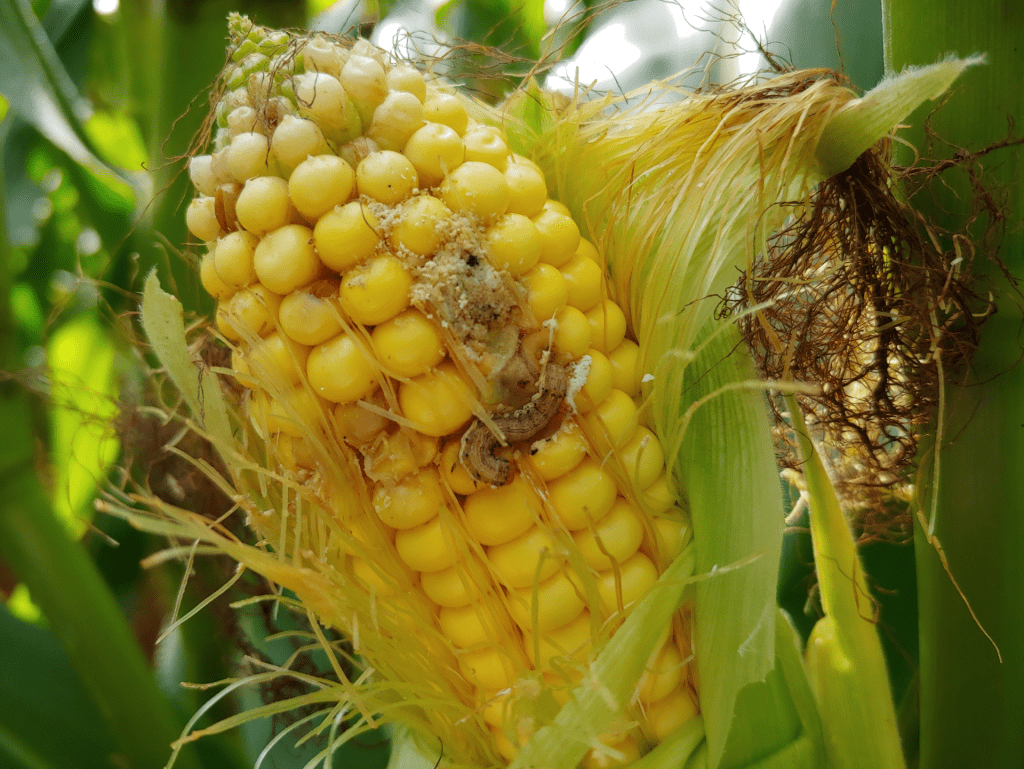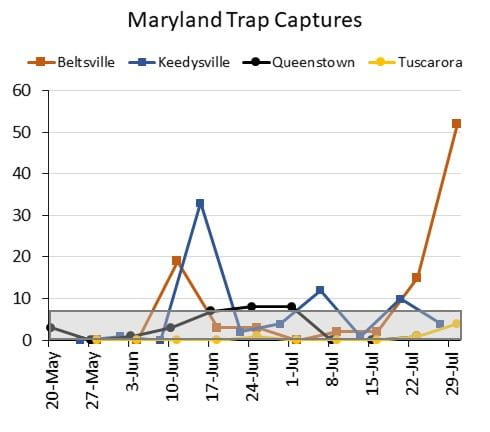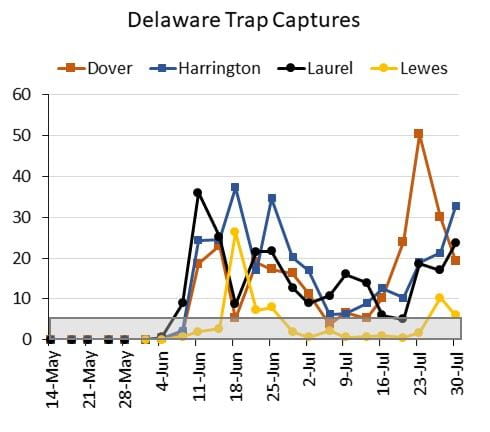Kelly Hamby1, Maria Cramer1, Galen Dively1, Sarah Hirsh2, Andrew Kness2 Alan Leslie2, Kelly Nichols2, Emily Zobel2, and David Owens3
1University of Maryland, Department of Entomology | 2University of Maryland Extension
3University of Delaware Extension
A few hot spots where corn earworm (also known as tomato fruitworm, soybean podworm, and sorghum headworm) activity is starting to rise have been identified in central Maryland and Delaware. The warm 2019-2020 winter allowed for overwintering in our area, and some parts of the state experienced a higher than normal first flight in early June. The warm weather through June and July made for speedy development and earlier activity for the second summer generation. Because corn earworm has developed resistance to most Bt hybrids, significantly more adult moths are emerging compared to levels a decade ago. Some areas continue to capture few moths and are experiencing low pressure, while others have been experiencing moderate pressure that may continue to increase towards heavy pressure (>65 moths captured per 5 days). Captures for select sites in Maryland and Delaware are pictured below, and values within the gray box indicate low pressure (<7 for weekly captures, and <5 for four to five day captures).

Although corn earworm prefer fresh corn silks for egg laying, they will lay eggs on wilted and brown silks if the plants remain green and unstressed. As corn matures further over the next several weeks, corn earworm activity will shift to other host plants including soybeans and vegetables. See last summer’s articles for scouting and management recommendations in vegetables as well as sorghum and soybeans.
Podworm outbreaks have historically occurred in growing seasons where the corn crop was drought and heat stressed, with corn senescing earlier than normal. However, narrow row spacing in soybeans makes the plants less attractive to female moths and increases the likelihood that fungal pathogens will infect the larvae. Therefore, it is important to scout bean fields, especially paying attention to those fields with a more open canopy in areas where the nearby maturing corn is no longer attractive to earworm moths. North Carolina State University has produced a helpful economic threshold calculator for podworm in soybean: https://www.ces.ncsu.edu/wp-content/uploads/2017/08/CEW-calculator-v0.006.html
Acknowledgements: Corn earworm trapping efforts in were supported by the Crop Protection and Pest Management Program [grant numbers 2017-70006-27171 and 2017-70006-27286] from the USDA National Institute of Food and Agriculture. Any opinions, findings, conclusions, or recommendations expressed in this publication are those of the author(s) and do not necessarily reflect the view of the U.S. Department of Agriculture.


